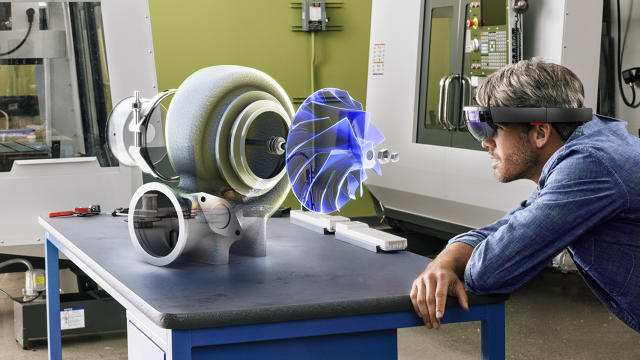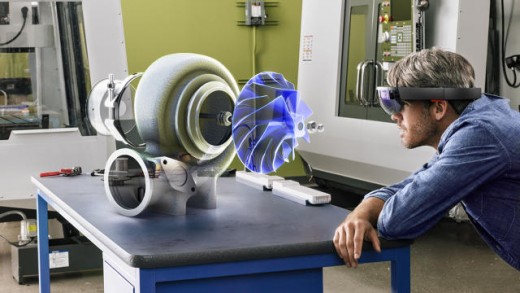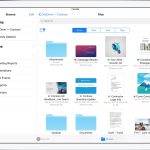In Microsoft’s HoloLens, A Glimpse At the way forward for interplay Design
enjoying round with Microsoft’s mixed truth headset, we discovered some suave interactions that would change into ubiquitous.
December 17, 2015
After taking the HoloLens “mixed-truth” headset around the united states of america to demo to keen developers, Microsoft is opening the doors to a a lot richer experience: a showroom, secreted on the fifth ground of Microsoft’s Fifth Avenue flagship store in ny, the place builders can dabble with three versions of HoloLens in action. if you’re a developer taken with digital fact, augmented truth, and interaction design in general, you should sign up now.
The three demos are, all of sudden, simple, quick, and even a little bit primitive—and on the same time, totally eye opening. The three depict core use-instances of a holographic headset: the use of it to create digital objects, à la Photoshop for the 3-D world; using it to display a holographic presentation, à la Powerpoint; and the usage of it to play a holographic recreation—à la Xbox.

a short refresher on HoloLens: it’s a shockingly relaxed, ergonomic, and neatly-designed headset that slips on with only a few quick adjustments. It has eye tracking and gesture sensing; it also tasks hologram-like images onto the visor. in short, that you may wander round the actual world, seeing holograms that range from toolboxes to speak home windows to spaceships positioned throughout you, albeit via a small portal.
Gaming is most likely probably the most straight away enjoyable of the three demos. You see virtual alien robots busting during the walls, and to ward off attack, you bob and weave your approach around the room. to fire your individual laser canon, you utilize an Xbox controller.
other demos are extra consequential. within the presentation demo, you see a hologram of a watch, which explodes into many layers, exposing its constituent components. in the advent demo, that you would be able to wander around a cartoonish reef. stare upon a fish, and it may be lower-and-pasted, scattering piscine clones into an ocean round you.

okay, nice! What’s All This For?
until you’ve truly been immersed in the entire rising augmented reality/digital fact area, you’re probably questioning what the enormous deal is. it’s possible you’ll even be thinking Microsoft has HoloLens, fb has Oculus, and Google’s funding the Magic soar—so that suggests all these guys are gonna duke it out with each and every other over who gets the proper to position a pc on our faces?
yes and no. The Oculus is a far more all-consuming tool than the HoloLens. Strap on a full-immersion headset just like the Oculus and the expertise is—to make use of current virtual fact parlance—extremely current. When an arrow flies at you in VR land, that you may’t lend a hand but duck because holy crap there may be an arrow flying at you.
yet Microsoft, like a would-be presidential nominee enmeshed in a chaotic major, is stridently seeking to point out some subtle, most likely decisive differences between HoloLens and Oculus. And they have got some extent. Oculus and other full-immersion headsets are solitary, personal experiences. You strap it on, and also you’re in every other world, with out much feel about what the individuals round you are doing. Full immersion makes a number of sense for anything you do on your pc solitary: playing call of duty or staring at a movie.
For extra social functions—giving a presentation or displaying any person find out how to fix a busted faucet—it’s important to see what somebody else is looking at. you need to share an setting in actual time, with no lag. Microsoft argues that whereas HoloLens isn’t as immersive as Oculus, additionally it is not intended to be. HoloLens is additive—reality plus. clinical college students might be guided thru a scientific procedure, whereas their professor screens exactly what they’re seeing. (Case Western is engaged on this now.) Product teams might build a jet engine by using manipulating a virtual reproduction, giving specified remarks and minimizing the need for multiple, iterative prototypes. (Adobe is engaged on this now.)

the principle issues you see
As you’re reading all these phrases about disembodied holograms floating ahead of your eyes, it’s a bit hard to deliver how cool all this might be one day. the location is similar to that when the first graphical consumer interfaces had been introduced. a variety of pc geeks at the moment understood that offering a pc program graphically could be nicer to use. Fewer of them understood why GUI’s may well be transformative, as a result of that had much less to do with capabilities, than in the way in which reworked approaches that had been exhausting to be aware into very simple pix. The GUI wanted Steve Jobs, who saw the possibility, and sweated every single element until the Macintosh GUI felt amazing.
I was once considering of this as I explored that digital product demo, fussing with equipment of a luxurious watch. As a sensory experience, HoloLens nonetheless appears like an early model of what it will have to develop into. The visual field is particular; you might be now not seeing holograms laid out all across your full sight view. as a substitute they hover throughout a slightly small windowpane floating in front of your eyes. The decision of the show itself remains to be low, meaning that the visuals are less Princess Leia begging for lend a hand, more Minecraft.
The hardware exposes nascent, if promising functionality, but the most fascinating facet of HoloLens is the interplay design. that is where the bets are being made. Microsoft has already carried out lots of of hours of person checking out to figure our simply how we would possibly interact in this new hybrid truth. They’ve already provide you with some very clever interactions, like making your gaze function as a mouse pointer: there’s a dot floating at the centerpoint of your vision, and to pick out up or interact with any virtual object, you first must gaze straight away at it, aligning a dot. to pick out one thing up or otherwise make it do one thing, you “finger click on” it, holding up your hand roughly in the shape of making a “number 1” gesture, then flicking your finger down. The motion monitoring cameras on the front of the HoloLens capture your hand motion and switch intention into interplay.

There’s a subtle cleverness in that action. the main problem with any interface that offers with blended fact is that it’s all too straightforward to accidentally do something that you didn’t intend. Say, for instance, that the designers had made the clicking gesture right into a mere hand wave. If that were the case, each incident gesture you made can be prone to set off an accidental click on. the stress in creating the precise gesture is in inventing something like the finger click which is intuitive whenever you’d taught—but additionally not going to ever happen unintentionally.
Already, Microsoft has suggested other gestures that can attain ubiquity. To summon a menu, dangle out a fist, with the back of your hand facing down, and speedy unfurl your fingers, similar to you’re revealing a hidden coin in the palm of your hand. That gesture makes a contextual menu bloom, like summoning a list of other folks in a video chat.
All these potential gestures will evolve. they’re going to also wish to gain knowledge of. simply as there was once once a race to define the most intuitive method to make use of a mouse cursor, so too will there be a race to define probably the most intuitive technique to have interaction with digital fact. The gestures and interfaces are as a minimum as necessary as the hardware systems themselves. but the thing is, even developers don’t but be aware of tips on how to have interaction in virtual reality.
Which brings us back to the fifth ground of Microsoft’s flagship store. Microsoft realizes you could’t just hope that ingenious developers will make a new know-how intuitive. You’ve obtained to teach them what you already know, and you have got to show them one demo at a time. From those few hundred first adopters, the hope is that millions extra will come.
[All Photos: Microsoft]
(25)














